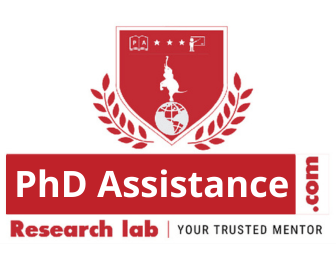Sample Work on Topic Selection
Info: 814 words Sample Topic Selection
Published: 20th DEC 2022
Tagged: Computer Science & IT
Topic 1: To enhance data security in Cloud Environment using Privacy Preservation technique
A successful methodology for data processing and archiving is cloud computing. Since user privacy is more crucial than ever, cloud data protection is getting better every day. The organization of data and the delivery of queries in the cloud must be secure and private in order for cloud-based technologies to be used more effectively and widely. In recent years, data collection has increased significantly as a result of the development of information technology (Agarkhed & Ashalatha R, 2017). The increase in Internet, social media, and multimedia consumers has made it necessary to manage enormous amounts of data in the cloud computing environment.
Major issues with cloud computing include security, protection, resource management, and energy management. Preventing unauthorized access to data by third parties is part of maintaining data confidentiality (Reddy & Rao, 2018). From this point forward, cryptography and data perturbation techniques can be employed to protect the data because they are essential for preserving the confidentiality and security of sensitive data files. Sensitive data is safeguarded by encryption-based approaches that are used to secure cloud platforms. Sensitive data must not be compromised by cloud service providers (CSPs). Data stored in the cloud is more secure thanks to the use of encryption methods. Additionally, the data perturbation approach can be used because it is a reliable and effective decentralized method that doesn't require any changes, allowing for much faster convergence in data security (Shynu et al., 2020).
Topic 2: A novel approach of predicting Software Defect using Data Mining Techniques
In recent years, software-based systems have drawn more attention, with software quality being viewed as the most crucial element in user functionality. Due to the enormous amount of application software being produced, software quality is still an issue that has to be addressed, which leads to inadequate output for commercial and personal applications. Companies typically employ defect prediction designs throughout the growth period to help with work forecasting, effort estimation, software dependability testing, hazard analysis, and other activities (Güven Aydin & Şamli, 2020). Software defect forecasting contributes to both industrial outcomes and development flaws while also assisting development teams with measurable results. Predicting difficult code parts helps simplify problem detection and test operation planning. Software quality is increased by foreseeing problematic modules (Thota et al., 2020). Data mining techniques can be used to create models for defect prediction, which is a strategy for identifying problematic systems, such as units or classes, early in the process.
The classifier approach defines the characteristic of classification, also known as the correlation between the attributes and the class label in the training dataset, and investigates it using the equations for target categorization. Additionally, the labels for next dataset classes will be determined using these criteria (Chen et al., 2020). Henceforth, mining the classification patterns and a classifier, unknown datasets can be classified easily. Defining software issues, identifying the flaw, and identifying it is a difficult process for researchers due to the extensive deployment of software. The major objective of dividing the software dataset into a defective and non-defective dataset as a model for bug prediction is to make software prediction easier. As a result, the user is aware of the actual class values, which enables the user to send the input software dataset to the classifier and, additionally, to forecast the software with greater accuracy (Cetiner & Sahingoz, 2020).
References
Agarkhed, J. & Ashalatha R 2017. A privacy preservation scheme in cloud environment. In: 2017 Third International Conference on Advances in Electrical, Electronics, Information, Communication and Bio-Informatics (AEEICB). February 2017, IEEE, pp. 549–552.
Cetiner, M. & Sahingoz, O.K. 2020. A Comparative Analysis for Machine Learning based Software Defect Prediction Systems. In: 2020 11th International Conference on Computing, Communication and Networking Technologies (ICCCNT). July 2020, IEEE, pp. 1–7.
Chen, J., Hu, K., Yu, Y., Chen, Z., Xuan, Q., Liu, Y. & Filkov, V. 2020. Software visualization and deep transfer learning for effective software defect prediction. In: Proceedings of the ACM/IEEE 42nd International Conference on Software Engineering. 27 June 2020, New York, NY, USA: ACM, pp. 578–589.
Güven Aydin, Z.B. & Şamli, R. 2020. A Comparison of Software Defect Prediction Metrics Using Data Mining Algorithms. Journal of Innovative Science and Engineering (JISE). pp. 11–21.
Reddy, V.S. & Rao, B.T. 2018. A combined clustering and geometric data perturbation approach for enriching privacy preservation of healthcare data in hybrid clouds. International Journal of Intelligent Engineering and Systems. (11)1,. pp. 201–210.
Shynu, P.G., Md. Shayan., H. & Chowdhary, C.L. 2020. A Fuzzy based Data Perturbation Technique for Privacy Preserved Data Mining. In: 2020 International Conference on Emerging Trends in Information Technology and Engineering (ic-ETITE). February 2020, IEEE, pp. 1–4.
Thota, M.K., Shajin, F.H. & Rajesh, P. 2020. Survey on software defect prediction techniques. International Journal of Applied Science and Engineering. (17)4,. pp. 331–344.




